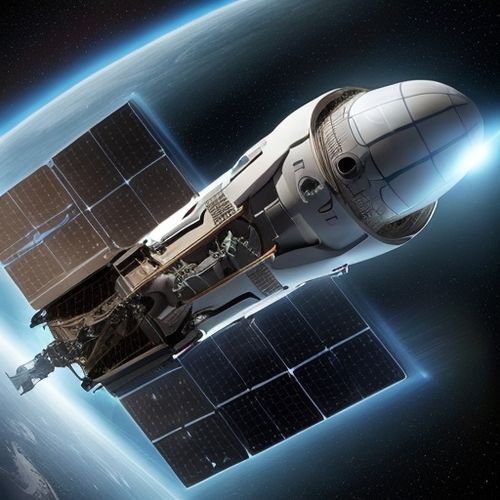The race to dominate the next frontier of technology has taken a dramatic turn with the recent establishment of the first intercontinental quantum internet link. This breakthrough, achieved by Chinese scientists, marks a pivotal moment in the global competition for quantum supremacy—a contest that has increasingly become a focal point in the escalating tensions between the United States and China. As both nations pour billions into quantum research, the stakes have never been higher, with implications not just for cybersecurity but for the future of global power dynamics.
Quantum internet, unlike its classical counterpart, leverages the principles of quantum mechanics to enable unhackable communication through quantum key distribution (QKD). The newly operational link connects Beijing and Vienna, spanning over 7,000 kilometers, and represents a significant leap forward in secure data transmission. While the U.S. has made strides in quantum computing, China’s rapid advancements in quantum communication infrastructure have positioned it as a formidable leader in this critical domain. The achievement underscores Beijing’s long-term strategy to dominate the quantum landscape, a move that has sent ripples through Washington’s defense and tech circles.
The geopolitical undertones of this development are impossible to ignore. For years, the U.S. has viewed China’s technological ascendancy with growing unease, particularly in fields with dual-use military applications. Quantum technology, with its potential to render existing encryption obsolete, sits at the heart of this anxiety. American officials have repeatedly warned that losing the quantum race could jeopardize national security, giving adversaries unprecedented access to sensitive communications. China’s latest milestone only amplifies these concerns, fueling debates in Congress over increased funding for quantum initiatives and tighter restrictions on tech collaborations with Chinese entities.
What makes this competition particularly volatile is the sheer pace of innovation. Just a decade ago, quantum communication was largely confined to laboratory experiments. Today, China has not only deployed a functional quantum satellite (Micius) but has now demonstrated intercontinental QKD—a feat many thought was years away. Meanwhile, the U.S. has focused its efforts on quantum computing, with companies like IBM and Google achieving milestones in qubit scalability. However, critics argue that America’s fragmented approach—relying heavily on private sector innovation—lacks the coordinated national strategy that has propelled China’s successes.
The implications extend far beyond cryptography. A fully realized quantum internet could revolutionize fields like finance, healthcare, and artificial intelligence, creating trillion-dollar industries in the process. The nation that controls this infrastructure will wield enormous economic influence, setting global standards and reaping the benefits of early adoption. China’s state-driven model, with its ability to mobilize vast resources, has given it an edge in infrastructure deployment. In contrast, the U.S. struggles to bridge the gap between theoretical breakthroughs and real-world implementation, a challenge exacerbated by bureaucratic hurdles and shifting political priorities.
Amid this rivalry, collaboration—once a hallmark of scientific progress—has become increasingly rare. Joint research projects between American and Chinese institutions have dwindled amid tightening export controls and visa restrictions. Many fear this decoupling could slow overall progress in quantum technology, as siloed research efforts duplicate work or overlook critical insights. Yet, with national security concerns trumping scientific diplomacy, the trend shows no signs of reversal. The irony, as some scholars note, is that quantum mechanics itself teaches us the interconnectedness of systems—a principle seemingly lost in the current geopolitical climate.
As the U.S. reevaluates its strategy, the Pentagon and intelligence agencies are pushing for a "quantum moonshot" akin to the Cold War-era space race. Legislative proposals aim to funnel billions into quantum hubs and workforce development, while export controls target China’s access to critical components like high-performance lasers. Whether these measures can level the playing field remains uncertain. What is clear, however, is that the quantum revolution is no longer on the horizon—it’s here. And in this high-stakes contest between superpowers, the winners and losers may well define the balance of power for decades to come.

By Olivia Reed/Apr 14, 2025

By Sophia Lewis/Apr 14, 2025

By Noah Bell/Apr 14, 2025

By Eric Ward/Apr 14, 2025

By Sophia Lewis/Apr 14, 2025

By Sarah Davis/Apr 14, 2025

By William Miller/Apr 14, 2025

By James Moore/Apr 14, 2025

By Eric Ward/Apr 14, 2025

By Grace Cox/Apr 14, 2025

By Rebecca Stewart/Apr 10, 2025

By Grace Cox/Apr 10, 2025

By Thomas Roberts/Apr 10, 2025

By James Moore/Apr 10, 2025

By Laura Wilson/Apr 10, 2025

By John Smith/Apr 10, 2025

By James Moore/Apr 10, 2025

By Olivia Reed/Apr 10, 2025

By Eric Ward/Apr 10, 2025